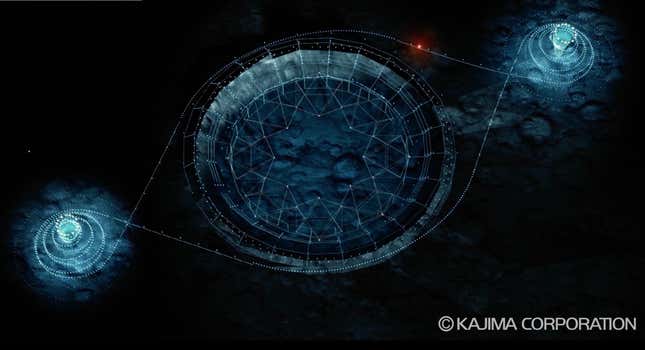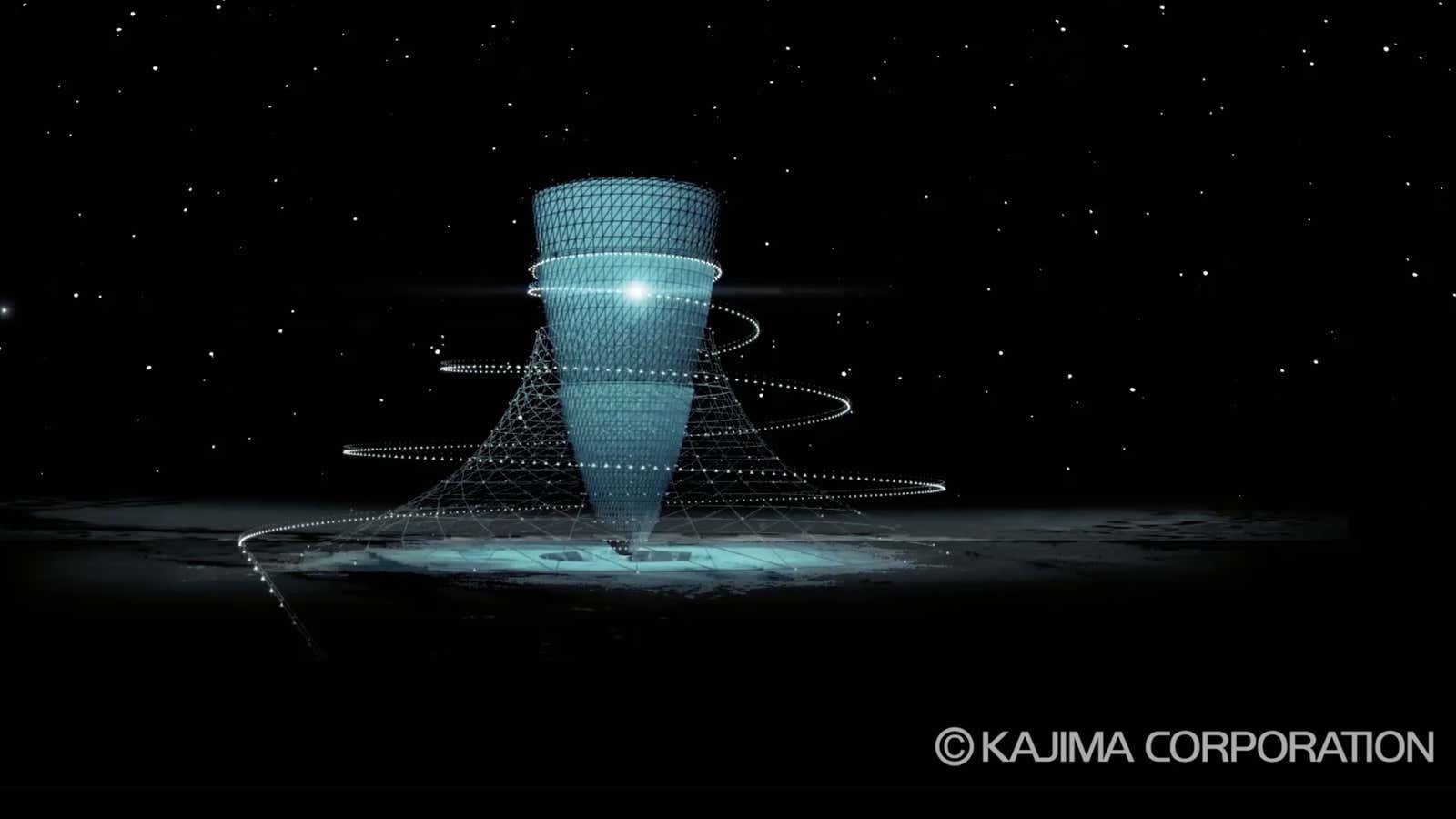Architects have conjured some odd-shaped space habitats over the years—airtight orbs, geodesic domes, and lantern-shaped structures among them. Japanese researchers, however, believe that the optimal extraterrestrial architecture is conical.
At a July 5 conference, a team from Kyoto University and the construction firm Kajima Corporation unveiled renderings of an “artificial gravity living facility” whose shape is conducive to approximating living conditions on earth. The 1,300-ft.-tall rotating structure, dubbed “The Glass,” is designed to complete a full rotation every 20 seconds, using centrifugal force to achieve the “normal gravity” humans are used to.

Designed for atmospheric conditions on Mars and the Moon, the team aims to erect a prototype of The Glass on the lunar surface by 2050, the local paper Asahi Shimbum reports.
A focus on artificial gravity research as the age of space tourism begins
The Japanese researchers say that creating an environment with Earth-like gravity is the key to thriving in space. “Without gravity, mammals might not be able to reproduce and their babies might not develop well,” the team explains in a press statement. “When a person grows under a zero or low gravity environment, their body would change so they wouldn’t be able to stand up on earth.”
The Kajima-Kyoto University team says Earthlings are clueless about how children adapt to a state of weightlessness, pointing out that NASA’s gravity research has largely been focused on adults. Studies show that traveling across different gravity fields can cause bone loss, back pain, and kidney stones.
As space tourism becomes available to more people, researchers say they want to shed light on the effect of microgravity environments on a diversity of human bodies.
Making other planets hospitable to humans
Beyond the standalone habitats, the researchers say we need to think of designing other artificial-gravity infrastructure to support communities on other celestial bodies. The scope of their research even includes developing a transportation system for interplanetary travel. They envision a “Hexagon Space Track System” that will maintain normal gravity during long-distance journeys.

“A completely original idea from Japan”
“The US and the UAE are proactively proposing the migration to Mars, but I would like to send out a completely original idea from Japan,” said Yosuke Yamashiki, a professor at Kyoto University’s SIC Manned Cosmology Research Center. “The core technologies are not being developed by other countries, and they’re indispensable for realizing human space migration.”
“Developing an artificial gravity residential facility with Kyoto University will be a watershed moment in space research,” echoed Takuya Ohno, an architect and researcher at Kajima. “We will work to make this joint research meaningful for humankind.”
